Jinjiang gets on the map as China’s sports shoe capital as Anta, Xtep and 361 Degrees snap up global athletic brands
- With a population of fewer than 2 million people, Jinjiang is home to as many as 5,000 shoe producers, employing one in every three local residents
- The county is home to three of China’s four largest sports shoes makers Anta, Xtep and 361 Degrees, all led by executives sharing the same surname

Running through the north of Jinjiang city in Fujian province is Xiedulu, or Shoe Capital Road, an 11.5-kilometre (7.1-mile) artery that reminds visitors they are in the beating heart of China’s production hub for footwear.
Here, a wholesale market covering 10 building blocks is packed with thousands of producers, designers, and vendors selling everything needed to cobble together a pair of shoes, from Velcro straps and laces to rubber soles, pattern printers and presses. Four giant, red characters atop the main building proclaim Jinjiang as China’s “shoe capital”, claiming the honour as long ago as 2001.
Shoes of all types and designs are made along China’s seacoast from Wenzhou in Zhejiang to Dongguan in Guangdong, but it is Jinjiang – where Adidas and Nike based their China factories starting in the 1980s – that dominates China’s production of sports shoes and trainers.
“Jinjiang is very special. Back then everyone was making sports shoes, mainly because Nike opened a factory here, so it created this environment,” said Ding Shuipo, founder and CEO of Xtep International Holdings. “I was one of them too. This has made [Jinjiang] the biggest producer of sports shoes for the domestic market.”
With a population of fewer than 2 million people, Jinjiang is home to as many as 5,000 shoe producers, employing one in every three local residents. The county churned out about 100 billion yuan (US$15 billion) of products in 2017, equivalent to 20 per cent of China’s market for footwear.
It is home to three of China’s four largest sportswear brands: Anta Sports, Xtep and 361 Degrees International. They stand out in this tight-knit community, armed with years of experience having made shoes for Adidas and Nike and billions of yuan of capital from their listings on the Hong Kong exchange. Now they are poised to claim their place in the world market.
Ding’s Xtep was founded in 1999 after years as Nike’s contract producer. Its trademark – a stylised cross, in stark contrast to the tick of Nike’s Swoosh logo – got its breakthrough in 2000 when Xtep engaged Hong Kong idol Nicholas Tse to endorse a design emblazoned with licking flames.
Rapid growth propelled it to the Hong Kong stock market in 2008, with a listing that raised US$285 million. Sales rose 25 per cent last year to 6.4 billion yuan, the fastest annual growth rate since 2010.
In March this year, Xtep partnered with Michigan-based Wolverine World Wide, which owns hiking brand Merrell, leisure brand Hush Puppies and running specialist Saucony. Last month, Xtep paid US$260 million in cash to buy E-Land Footwear, the owner of the leisure brands K-Swiss, Palladium and Supra.
The new brands from the acquisitions “can augment our business”, Ding said. “That is why we want to work with them: to fill the gaps in the market.”
Ding’s bigger rival, Anta Sports Products Limited, has not been standing still. The largest among China’s home-grown sports shoes makers by value, Anta’s 2018 sales jumped 44 per cent to 24.1 billion yuan.
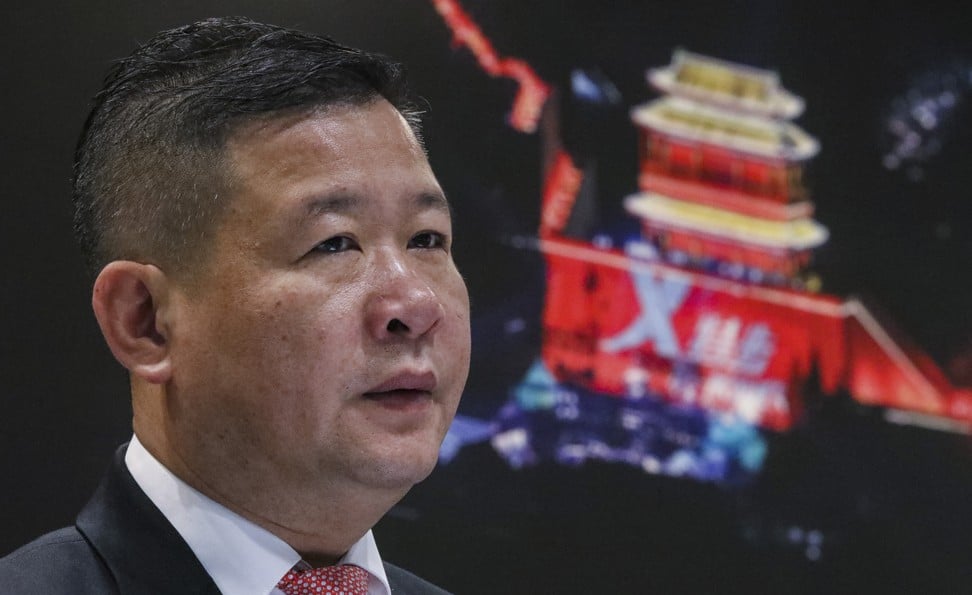
The Jinjiang-based company, founded by Ding Shizhong five years before Xtep’s establishment, led a consortium in a €4.6 billion (US$5.15 billion) acquisition of Amer Sports, adding the Finnish company to its portfolio of Fila, and Japan’s Descente.
Founded in 1950 in Helsinki, Amer is one of the world’s biggest owners of multiple brands, from Atomic skis to Salomon snowboards, Arc’teryx outdoor gear to Mavic bicycle wheels and Suunto sports watches.
The acquisition is another step in Anta’s strategy to ally itself with Olympic sports, as it secured the right as the Official Partner for Sports Apparels of the 2022 Winter Olympics in Beijing. The company had been dressing the Chinese national team since the 2016 Olympics in Rio de Janeiro.
Xtep and Anta are pursuing what is known as a multi-brand strategy, using a portfolio of brands that appeal to different tastes, demographics and budgets to reach a broader cross-section of customers especially among the largest Chinese cities where customers often prefer the cachet of foreign logos to local brands.
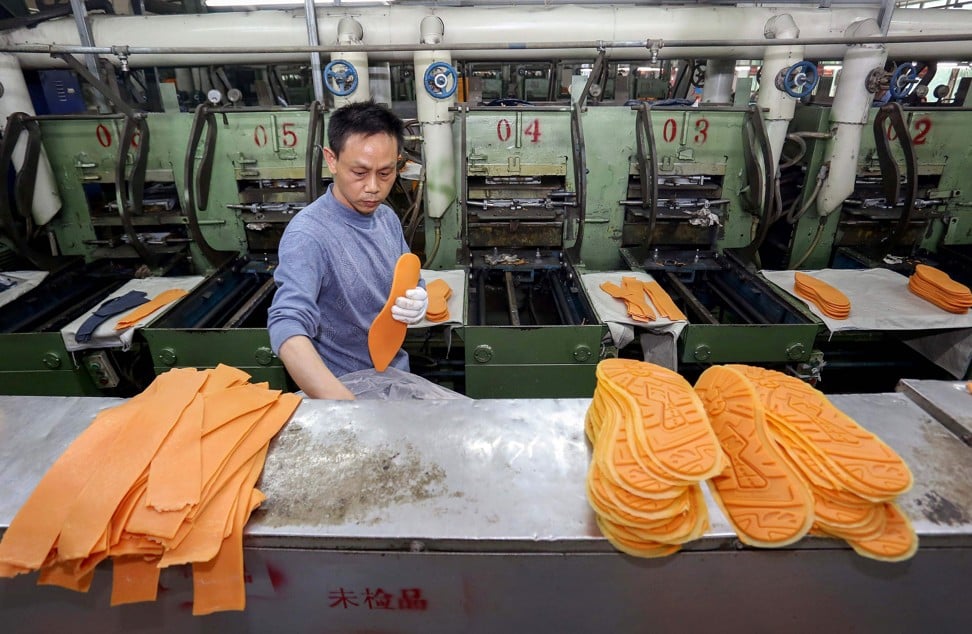
At 9am every day, minivans and motorcycles zoom in and out of the wholesale market in downtown Jinjiang, and shop fronts open to reveal rolls of materials from leather to suede and velvet. Workers can be seen hunched over sewing machines in some shops.
Two kilometres east of the buzzing market, Xiedulu weaves around Chen Dai township. Anta’s founder Ding Shizhong and Xtep’s Ding Shuipo grew up here.
Though not related to each other, they share the same surname, along with 361’s chairman Ding Huihuang and his son-in-law Ding Wuhao across town. The executives of Anta and 361 declined to be interviewed for this article.
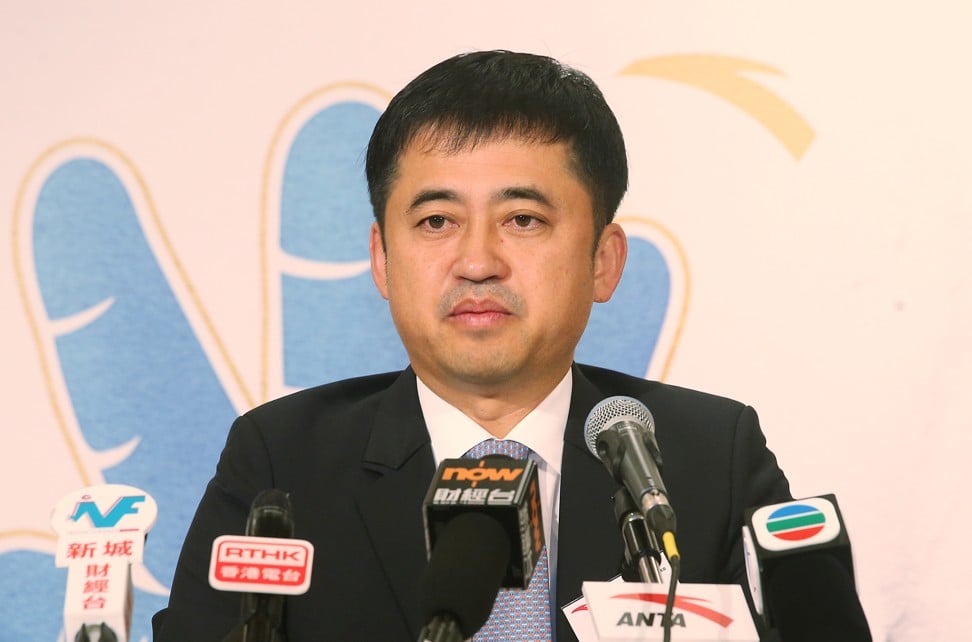
“Ding Shizhong and I are of the same age; we were classmates and are really good friends,” said Xtep’s Ding Shuipo, during an interview in Jinjiang with South China Morning Post. “We were also neighbours.”
The two remained close through the years, with the corporate headquarters of Xtep and Anta sitting two buildings apart from each other in a Jinjiang industrial park filled with the new tenants, predominantly sports brands.
Peak Sport Products, who expanded from basketball-related apparels and shoes to jogging, football and tennis, is also here; as is Hongxing Erke Group, the official kit sponsor for the North Korean national football team.
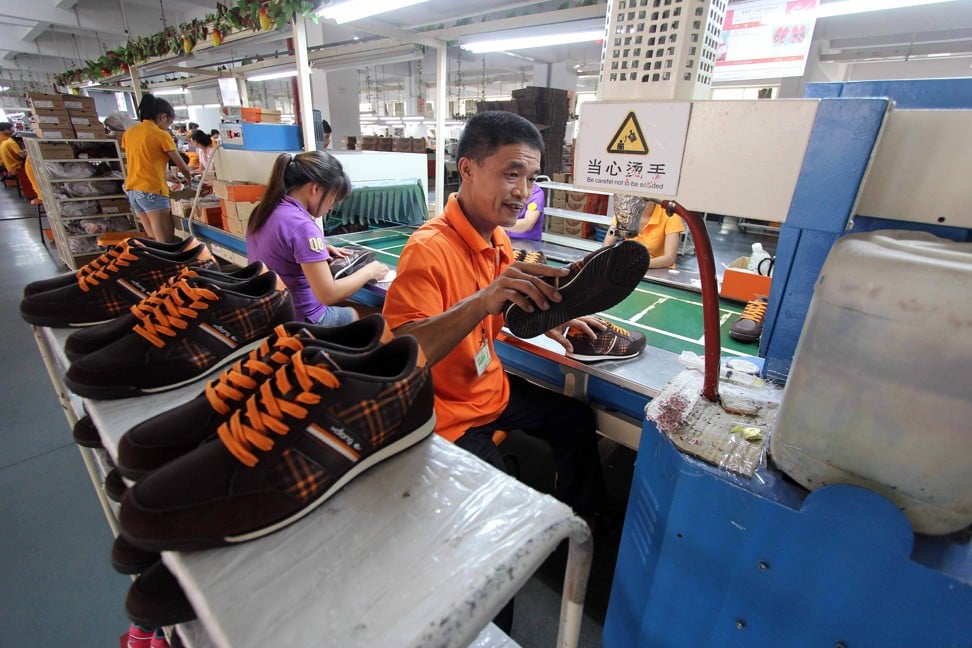
Sportswear sales in China is projected to increase 45 per cent from last year to US$58.2 billion by 2023, spurred by a rapidly expanding middle class that is growing in affluence and becoming more sophisticated and discerning, according to a forecast by Euromonitor.
Sales have also been helped by the Chinese government’s active promotion of sports and wellness in the ageing society, such as the Healthy China 2030 programme that aims to push 700 million people to engage in physical activity at least once a week.
Between the 2008 Olympics and the 2022 Winter Olympics – both in Beijing – China has hosted numerous global sports events.
“In a nutshell, China’s sports industry is growing,” said Ding, citing Beijing’s aim to more than double the scale of the country’s sports industry to 5 trillion yuan by 2025, from 2 trillion yuan last year. “China still has a large space for us to grow.
The trade war does not affect us at all. We aren’t exporting, we only sell within the country, even our materials do not need to be imported and we do not sell our products to the US.”
More than 100 million people, or one in 14 of the country’s population, have at least one fitness app on their smartphone, according to the Global Wellness Summit.
The market is becoming increasingly saturated and competitive, with Nike and Adidas continuously growing over the past decade to now dominate the market.
The rest were international brands. To be sure, Adidas and Nike still reign with a respective 19.5 per cent and 19 per cent market share, and their popularity isn’t weaning. From 2009 to 2018 Adidas’ presence leapt over 100 per cent, overtaking Nike as the largest brand in 2013. Through the same period, Nike grew by roughly two-thirds, according to Euromonitor.
In 2016 Adidas announced a plan to expand its sales network from 9,000 to 12,000 stores in China by 2020. Meanwhile, New York-listed Under Armour is scaling up in Asia with a focus on China, the “big machine in the region”, said Jason Archer, managing director for Asia-Pacific.
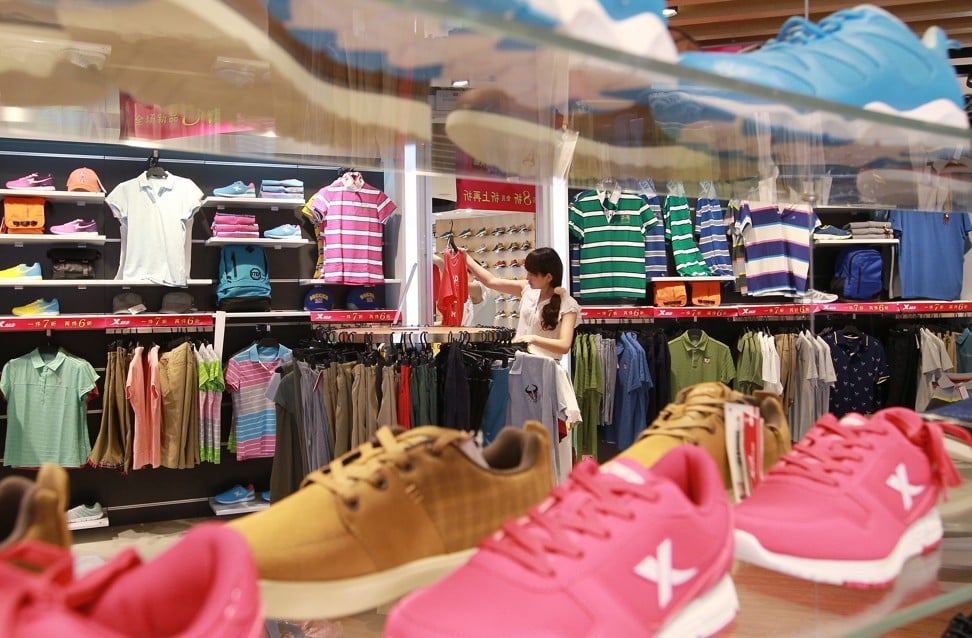
Anta has around 10,000 stores, Xtep has over 6,000 and 361 roughly 5,500 scattered throughout China.
Little known internationally, Anta is the eighth-biggest sportswear company in the world by market share, and the only Chinese firm to reach the top 10, according to Euromonitor.
It is the third largest sportswear brand sold in China, with an 11 per cent share last year. Xtep was sixth, accounting for 4.6 per cent, followed by 361 which held 3.9 per cent.
The only other Chinese company to make the top 10 was Beijing-based Li-Ning, at number four.
To grow its market share and challenge the larger international brands, Xtep has carved out a market niche in running since 2015, and became the official partner of China Marathon a year later. It has also launched its own national running festival, tapping into the sport’s growing popularity.
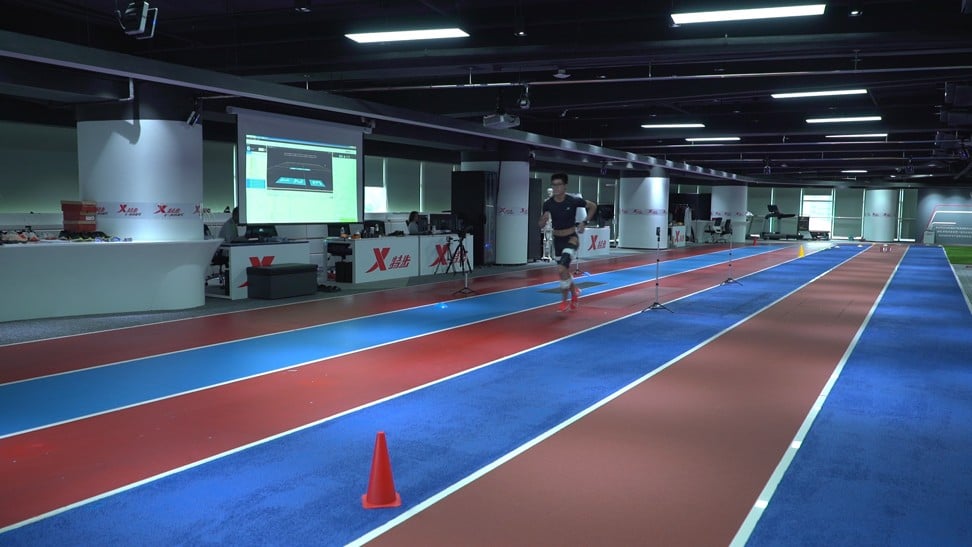
China hosted 1,581 certified marathons last year, 44 per cent increase from 2017, according to the China Athletic Association. By 2020, China aim to host over 1,900 running events, or an average of five long-distance races every day across the country.
The 11th floor of Xtep’s Jinjiang headquarters gives visitors a hint of Xtep’s ambitions. Here, a six-lane circular running track sits alongside what the company’s chief scientist Jason Cheung Tak-man calls a “world class” research laboratory.
Footwear design and testing labs, material-making machines, 3D printers and a small production line for prototypes and customised, or limited-edition shoes for elite runners complete the set-up.
Personalised running shoes for the elite runners sponsored by Xtep – including Chinese marathoner Dong Guojian, who ran the Chongqing marathon in 2 hours 11 minutes – take at least a year to develop. Last year, Xtep sold 40 million pairs of shoes, churning them out of factories in Fujian and outsourcing them.
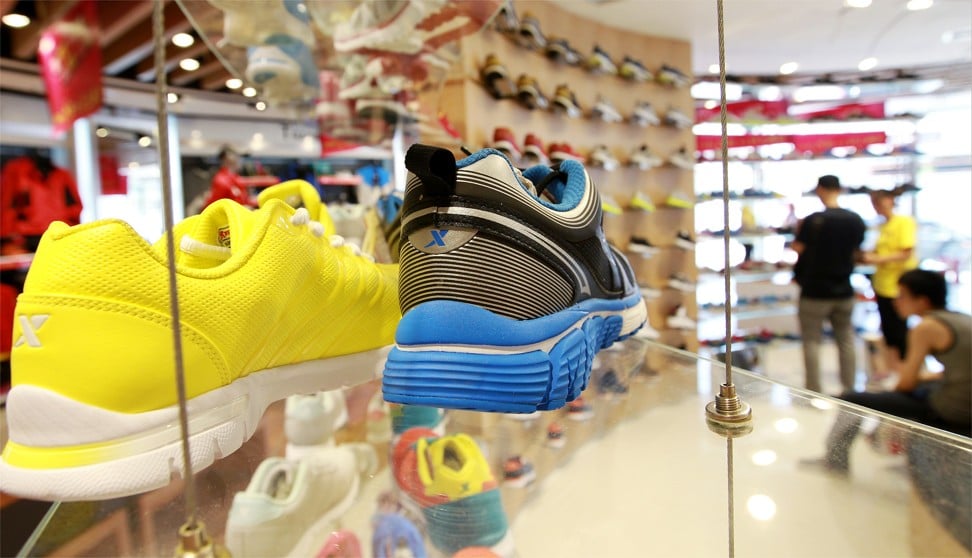
Every day, a team of 50 scientists and engineers conduct research, design, develop and test running shoes. Athletes test their gear on the track, while infrared, force and body sensors analyse every aspect of their running gait, speed and cadence.
“Then we know how good the shoes are in terms of cushioning or shock absorption,” said Cheung, who previously built a research lab for Li-Ning Company, the first major Chinese sportswear company, where Cheung had worked for six years.
“We also collect motion and force. We do not just want to know about the buying behaviour, but also the biomechanics, so that we can build functional shoes. It’s an evidence-based approach.”
Running is Xtep’s entry point into the global market, as the number of runners and races in the world’s most populous country give the company a wealth of data to improve on the design and performance of its shoes.
For now, the sport is still new in China. The fastest Chinese marathoner to be among the world’s top 25 runners is Sun Yingjie, who clocked 2 hours 19 minutes in 2003.
“We want to be the preferred running brand in China,” said Cheung. “Once that market niche is achieved, we have a chance to compete with all other brands in the world.”